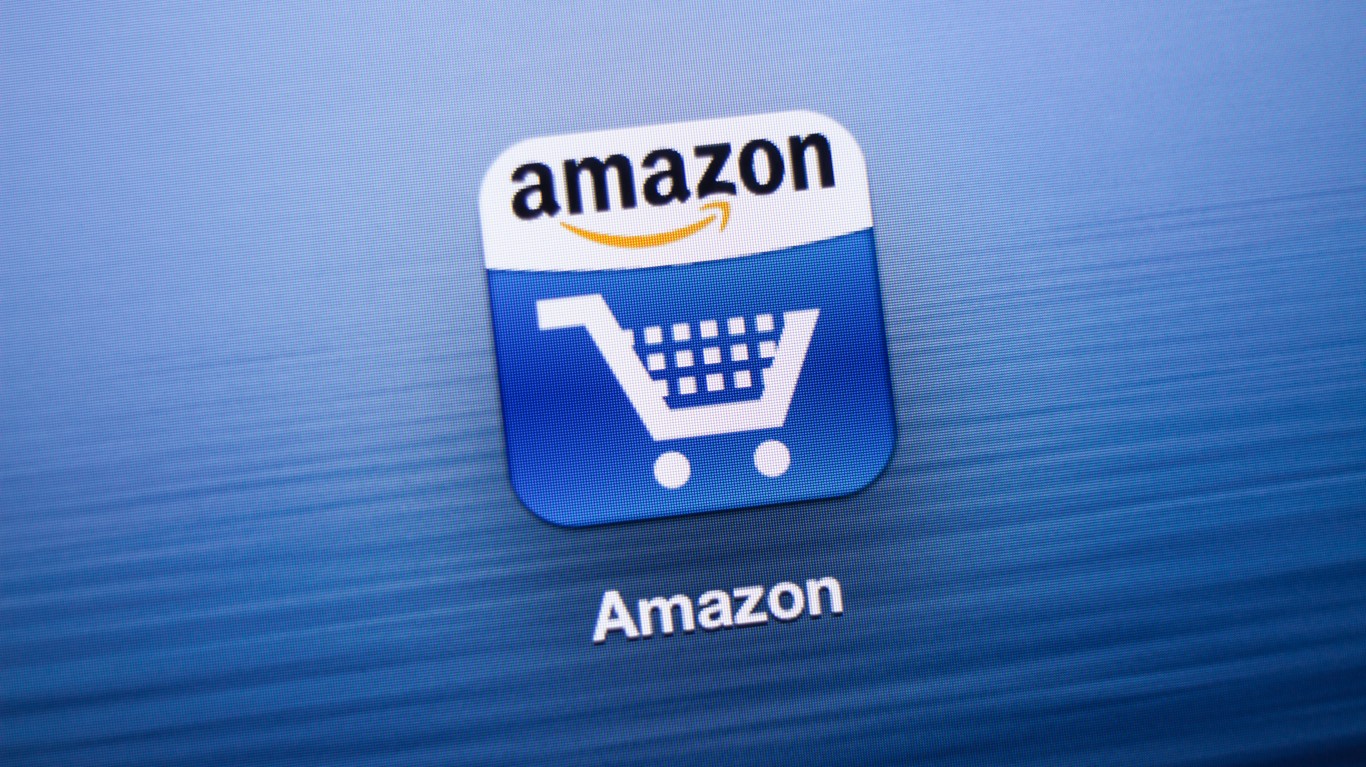
In the wake of protests across the country and in many cities around the world, Amazon.com Inc. (NASDAQ: AMZN) announced last week that the company would suspend for one year police use of its Rekognition facial recognition technology. The brief statement on the company’s official blog noted that Amazon encourages recent movement by Congress to “put in place stronger regulations to govern the ethical use of facial recognition technology.” Amazon’s stock price dropped by around 3.4% on that day.
Amazon shares dipped by about half the amount of the S&P 500 index on the same day, so it’s unlikely that the announcement had a huge impact on the share price.
On Saturday, Reuters reported that the states of California and Washington had launched investigations in some of Amazon’s business practices. In California, the state is looking at the company’s practice of selling its own products in competition with third-party vendors. In Washington, the investigation reportedly is examining whether Amazon makes listing products on other websites more difficult for third-party sellers.
The impact of Rekognition software sales on Amazon’s top line is likely negligible. And neither investigation is far enough along to yet have had much impact on the e-commerce giant’s stock price.
What may give investors pause is whether the company will continue to dominate online retail sales following the wider adoption of online shopping resulting from the COVID-19 pandemic and the stay-home orders that followed.
Amazon Still Dominates, but by a Smaller Percentage
Prior to the lockdowns following the coronavirus outbreak, Amazon’s online retail revenue accounted for 40% to 44% of all online retail spending. That percentage has now dropped to around 35% to 37%, according to a report in the New York Times.
The difference of between five and 10 cents does not sound like much. Yet, with net sales of more than $280 billion in 2019, the loss of 5% to 10% on each dollar adds up quickly.
Even though Amazon said it will hire 175,000 new employees, the company has faced shipping delays and supply disruptions for in-demand items. If customers cannot get the products they want from Amazon, there are plenty of other choices. Walmart Inc. (NYSE: WMT) and Etsy Inc. (NASDAQ: ETSY) have done particularly well. Costco Wholesale Corp. (NASDAQ: COST) and Target Corp. (NYSE: TGT) have experienced more online demand as well.
One interpretation of the current situation is that the online retail pie is growing rapidly and that the smaller share going to Amazon is, in fact, still an immense slice of an ever-expanding pie. Another is that the newly discovered presence of alternative online sellers may lead consumers to consider other trusted brands for the online shopping needs.
For now, what will happen when the pandemic is brought under control is anybody’s guess. There’s a lot of speculation about a “new normal,” but if that is the outcome, no one really knows what it will look like.
One Analyst’s View of Amazon’s $1.3 Trillion Market Cap
RBC Capital analyst Mark Mahaney last week reiterated his Outperform rating on Amazon stock. He also lifted his price target from $2,700 to $3,300, the highest 12-month target among 45 analyst calls. Mahaney believes that Amazon has ironed out many of the delivery and supply issues that consumers have complained about.
Amazon’s secret weapon, of course, is the not-so-secret Amazon Prime service. The company has penetrated about two-thirds of the online market, according to Mahaney, and Prime subscribers have mostly remained loyal and, more important, will continue to be loyal.
If Amazon can continue to expand its Prime subscriber numbers and conquer its shipping and inventory glitches, it could recover the online market share it has given up and even gain share. If Mahaney is correct, Amazon’s market cap could top $1.6 trillion in the next 12 months.
Amazonian Headwinds
Despite the bright outlook that Mahaney and other analysts (about 90%) see for Amazon, the company faces serious challenges. The strongest may be political. It’s no secret that Amazon CEO Jeff Bezos is not a favorite of the current president. If Trump wins a second term in November, the pressure will only rise.
Amazon also is under pressure from Democrats. Several of the party’s leading liberals have railed against the company for paying no income taxes and paying low wages.
The company’s policies related to the sale of counterfeit products by some third-party sellers also have come under fire. Other online sellers that support large numbers of third-party sellers (eBay and Alibaba, for example) have been criticized for not doing enough to thwart counterfeiters.
Some legitimate third-party sellers may also be liable for state sales taxes on products delivered by Amazon (Fulfilled by Amazon is the official name of the program) even though the sellers contend Amazon should have been paying the taxes.
The issue for Amazon appears to boil down to whether the tailwinds are stronger than the headwinds. In the 25 years or so of the company’s history, its much-publicized customer-centric operations have delivered substantial value for shareholders.
However, as the company has grown into a behemoth that includes Amazon Web Services, Whole Foods Markets and its own airline, scrutiny of its operations has intensified. That scrutiny is unlikely to subside no matter the result of the November elections.
Take Charge of Your Retirement In Just A Few Minutes (Sponsor)
Retirement planning doesn’t have to feel overwhelming. The key is finding expert guidance—and SmartAsset’s simple quiz makes it easier than ever for you to connect with a vetted financial advisor.
Here’s how it works:
- Answer a Few Simple Questions. Tell us a bit about your goals and preferences—it only takes a few minutes!
- Get Matched with Vetted Advisors Our smart tool matches you with up to three pre-screened, vetted advisors who serve your area and are held to a fiduciary standard to act in your best interests. Click here to begin
- Choose Your Fit Review their profiles, schedule an introductory call (or meet in person), and select the advisor who feel is right for you.
Why wait? Start building the retirement you’ve always dreamed of. Click here to get started today!
Thank you for reading! Have some feedback for us?
Contact the 24/7 Wall St. editorial team.




